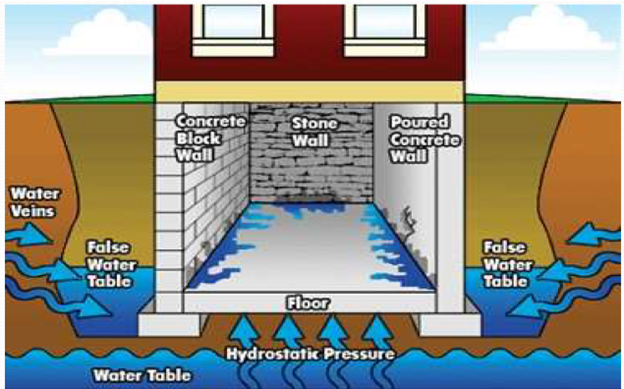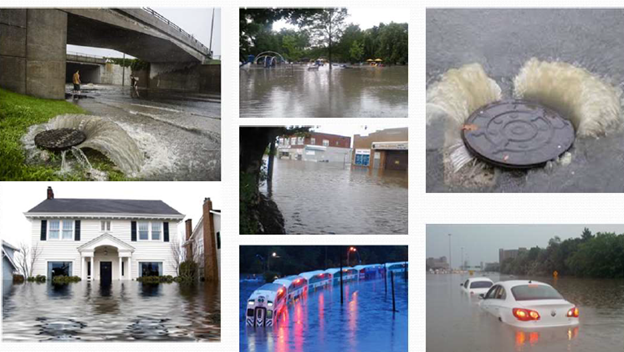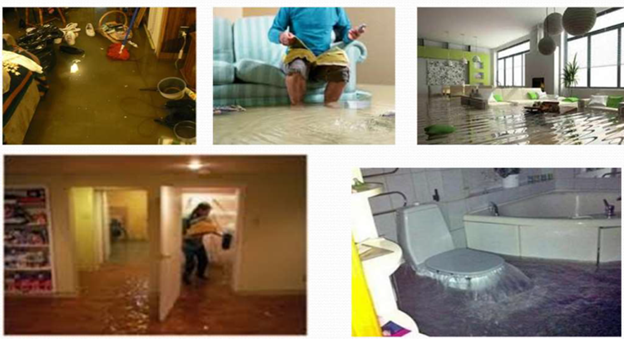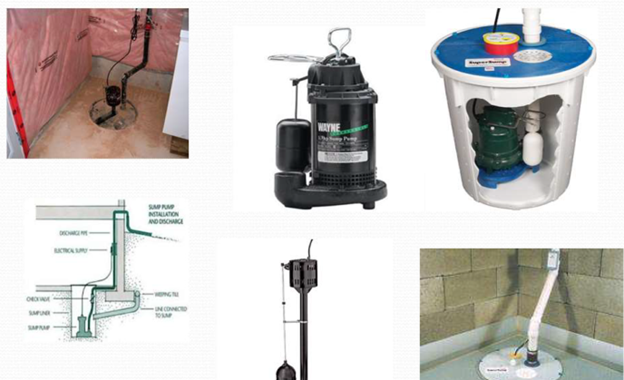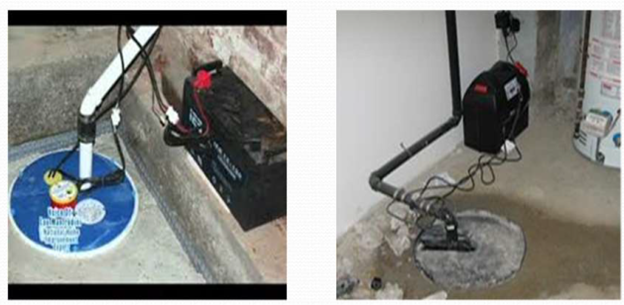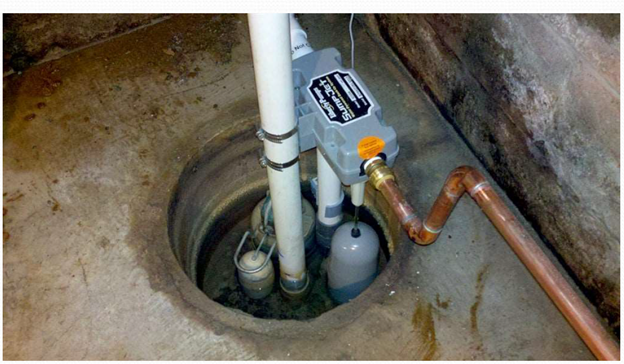5 Most Common Causes of Basement Water Damage
5 Most Common Causes of Basement Water Damage
Water damage in basements is a pervasive issue that can lead to costly repairs and health hazards if not addressed promptly. At Winmar Kootenay, we understand the importance of identifying the root causes of basement water damage to effectively mitigate and prevent future incidents. We focus not only on the resultant damages, but also work hard to correct the cause of water ingress. In this blog post, we’ll explore the five most common culprits behind basement water damage and provide insights into how homeowners can safeguard their properties.
1. Water Entering at Slab to Wall Interface:
Also referred to as “cove molding” infiltration, one of the primary causes of basement water damage is water infiltration through the slab to wall interface. Our homes are often poured with foundation footings first, walls second, and basement slab third. Pouring these separately creates what is called a “cold joint.” If done properly with a water stop or capillary break material embedded at the joint, you will typically not have issues; however, many older homes were not poured with a capillary break at the cold joint.
In the spring, when snow melts and we get rain on snow events the groundwater table reaches saturation and increases the hydrostatic pressure pushing up on your basement walls and slab. Imagine your home in the spring is like a boat. The bottom of the boat is your basement, and the water way up high on the walls of the boat is the groundwater table. If you poke a hole in the bottom of the boat, water immediately rushes up because of the pressure wanting to stabilize from high to low. In your home, when hydrostatic pressure builds up around the foundation, water is forced to seep through cracks and gaps at the cove joint. You will often see the perimeter of your floors being wet in the spring, and sometimes moisture wicks up your drywall basement walls 18 inches. Over time, this continuous moisture intrusion during the rainy season can lead to dampness, mold growth, and structural deterioration. Proper waterproofing measures, such as installing a drainage system on the interior or exterior of your home, or applying sealants to vulnerable areas, can help prevent water from entering the basement through the slab to wall interface.
Some policies cover you for groundwater intrusion, and some exclude seepage. A good restoration contractor can assess the cause of loss, and ensure the reporting accurately describes the source of water. If your contractor is inexperienced, they may make assumptions that are false, causing you to be denied coverage. Ask your contractor’s project manager what their credentials are. Are they a field technician with minimal understanding of foundations and groundwater, or are they or their manager a Professional Engineer or Civil Engineer with in depth knowledge of construction and hydrostatic pressure?
2. Overland Flooding:
Overland flooding, often triggered by heavy rainfall, melting snow, or inadequate drainage systems, can result in water pooling around the exterior of the home and wintering the basement though window wells. Poor grading, clogged gutters, piling of slow alongside your home, and insufficient drainage pathways exacerbate the risk of overland flooding. To mitigate this risk, homeowners should ensure proper landscaping and drainage solutions are in place, such as installing French drains, weeping tile systems, extending downspouts away from the foundation, watching where you pile snow, and grading the soil away from the home’s perimeter at a grade of at least 1%.
Typical weeping tile install
**3. Pipe Burst:**
Sources of Pipe Bursts
A burst pipe is a sudden and catastrophic event that can cause significant water damage to basements and other areas of the home. A ½ water line running for just a few hours can flood a house top to bottom. Imagine the amount of water coming from your garden hose, this is the same volume of water that can come from a small water line in your home. Common causes of pipe bursts include freezing temperatures, aging refrigerator supply lines, corrosion, nails from construction penetrating the line, high water pressure, and deteriorating pipes such as Poly-B. When a pipe bursts, it can release hundreds of gallons of water per hour, leading to flooding and structural damage. Regular inspection of plumbing systems, proper insulation of pipes in cold climates, and prompt repair of any leaks or weaknesses can help prevent pipe bursts and subsequent water damage.
If your area is going through a seasonal cold snap, consider leaving a faucet slightly open so water can continue to flow through the pipes inside your insulated exterior walls. When older homes were designed, they assumed what is referred to as a “design temperature”, if your area has unusually cold weather for it’s climate (such as Creston, BC), keep your interior at least 18 degrees Celsius.
Many older homes have hose bibs that exist the foundation wall. Consider upgrading these to a frost-free setup so they don’t risk the chance of freezing and bursting.
Know the location of your main water shutoff valve, and cycle/test it every 6 months to ensure it will be operational in time of emergency.
If your home has Poly-B plumbing, consider upgrading it to a better product as these are notorious for leaks after several years of use.
**4. Sewage Backup:**
Sewage backup is a hazardous and unpleasant occurrence that occurs when wastewater from the municipal sewer system or septic tank backs up into the basement through drains, toilets, or floor drains. This can happen due to blockages in the sewer line, tree root infiltration, or heavy rainfall overwhelming the sewage system. In addition to causing extensive water damage, sewage backup poses serious health risks due to the presence of pathogens and contaminants. Homeowners can reduce the risk of sewage backup by installing backwater valves (backflow preventers), maintaining sewer lines, and avoiding flushing non-biodegradable items down the toilet.
Determine where your sewer lines exit your home and enter the street. Walk this in a straight line in the summer and look for depressions in the ground, which can often indicate either a leaky water supply line, or a leaky sewer line. When ground becomes wet it can sometimes settle and erode. If you want to go one step further, every 5 years pay a local plumber for a preventative camera inspection of your sewer lines. If you see any caving in, cracking, or tree roots, consider planning to replace the line.
**5. Sump Pump Failure:**
A sump pump plays a crucial role in preventing basement flooding by pumping excess water away from the foundation. However, sump pump failure can occur due to power outages, mechanical malfunctions, or improper maintenance. When a sump pump fails, water can quickly accumulate in the basement, leading to flooding and water damage. Regular inspection, testing, and maintenance of sump pumps are essential to ensure they are functioning correctly when needed most. Additionally, installing a backup sump pump or a battery-powered backup system provides an extra layer of protection against basement flooding.
Test your sump pump twice a year by manually filling it with water and seeing if the float is set to the right height. Consider using a wet/dry vac to clean the sludge from the bottom of the sump. Often the intake of the pump can become clogged by debris, causing the pump to either fail to move water, or to overheat and fail due to lack of cooling of the motor.
Battery backup system on a sump pump
Water powered sump pump backup system
Backflow preventer
Conclusion
Basement water damage can stem from various sources, ranging from natural disasters to plumbing failures.
By understanding the common causes outlined above and taking proactive measures to address them, homeowners can safeguard their basements against water intrusion and its detrimental effects.
Many policies have exclusions or policy limits for various perils whether it be overland flooding, groundwater, sewer backup, or utilities between your home and the street. At Winmar Kootenay, we specialize in taking the time to determine with certainly, what the cause of loss is to ensure you have clarity on fixing the root cause, filing a claim if coverage might apply, or improving your home’s ability to stay dry. We provide comprehensive property restoration services, including water damage mitigation and basement waterproofing solutions. Contact us today to learn how we can help protect your home from basement water damage and restore it to its pre-loss condition.

